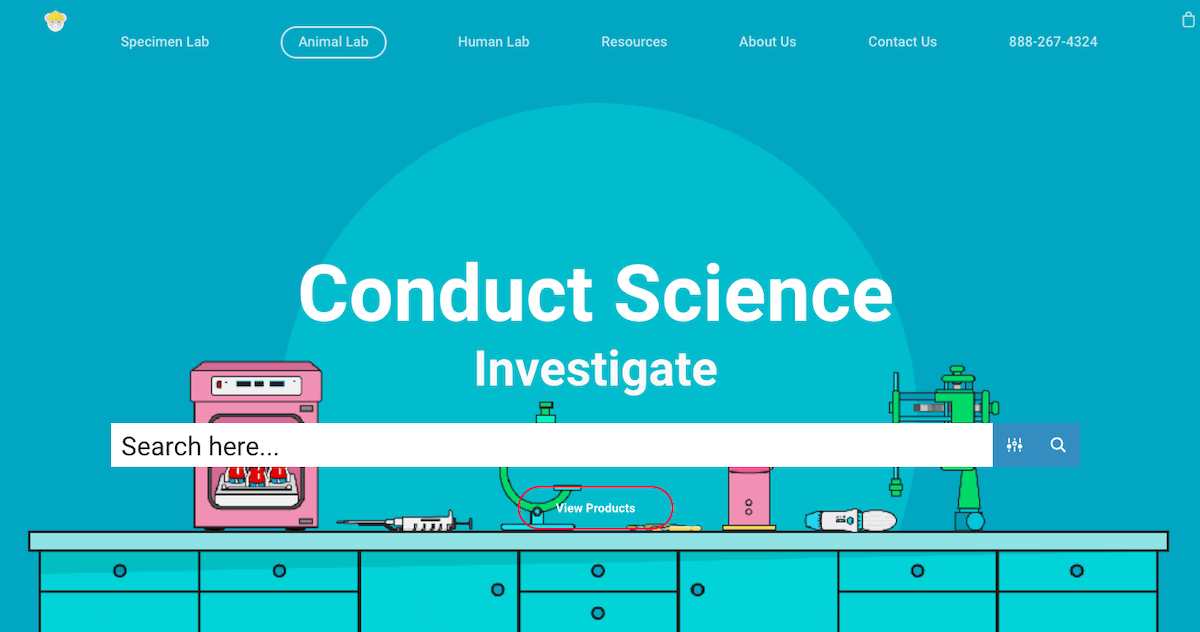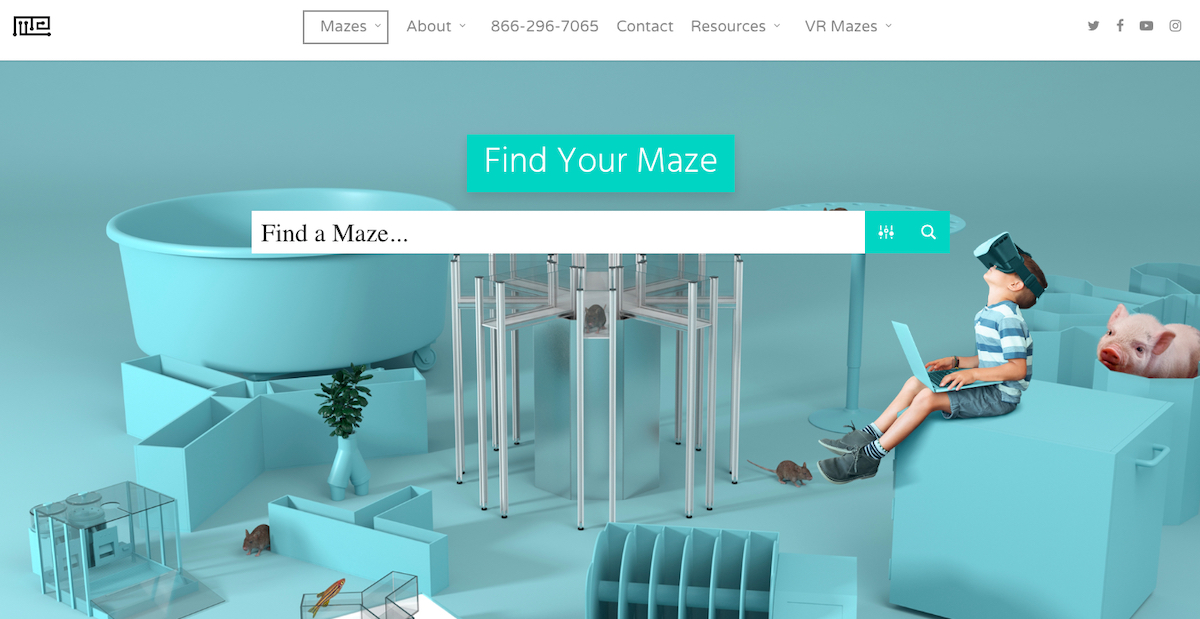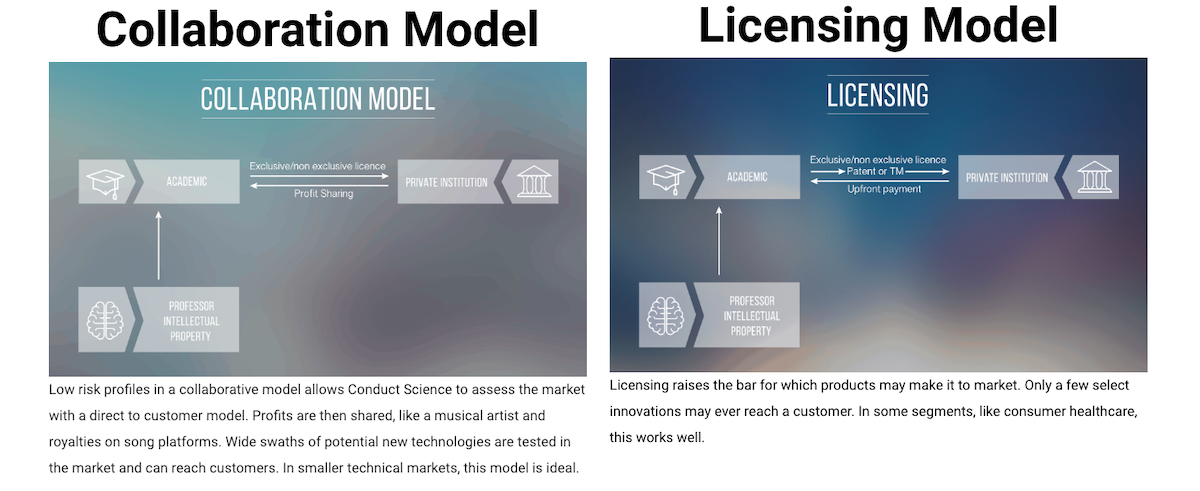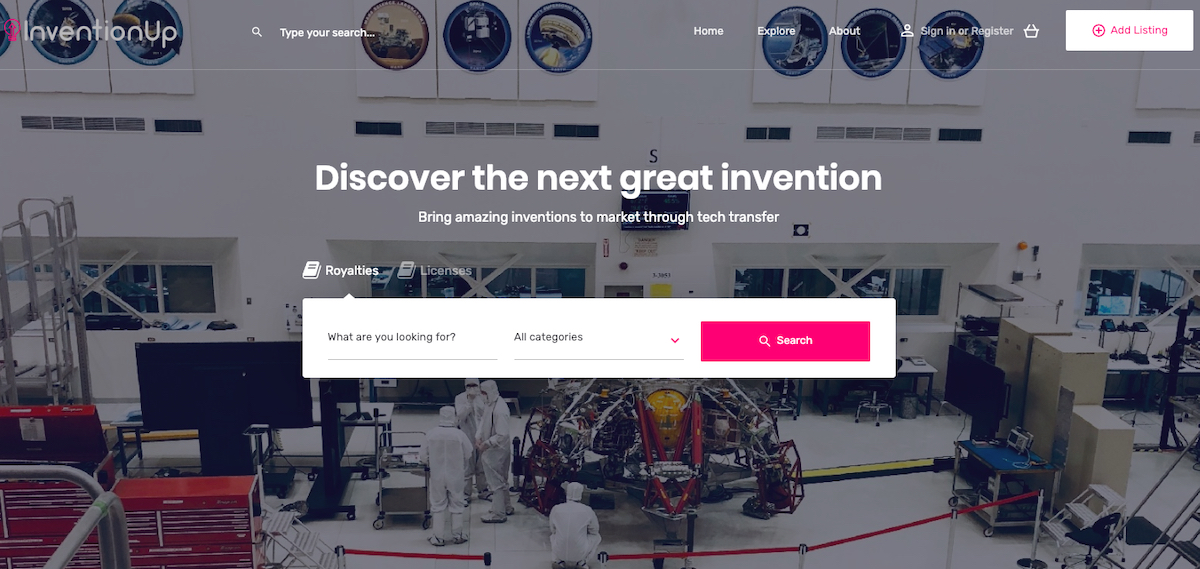Bootstrapping a Hardware Product to 7 Figures Despite Student Debt
Hello! What's your background, and what are you working on?
Hello! My name is Shuhan He, and I am an MD resident physician and emergency medic at the Massachusetts General Hospital and Brigham and Women’s Hospitals. I am also a scientific entrepreneur, and my main project is called Conduct Science.
Scientific research requires the best tools in order to get the most accurate results, and Conduct Science aims to facilitate better scientific research with better tools. Conduct Science constitutes a network of scientific websites that collaborate to create tools for science and medicine. Every organization in our network develops their own unique tools, and we help along the way and promote their tools to market.
Take our digital health experts at Qolty, for example. Researchers at Qolty developed an app to help monitor the symptoms of depression, which has the potential to help many people. But selling scientific tools to other scientists is a notoriously tricky task, and there may be only so much one team can do by itself to push their tool into various labs without straining their resources or having to put a different part of the business on the backburner while they chase sales and growth. With the support of the Conduct Science network, this app can reach more labs and, ultimately, a wider audience, without so much strain.
We also work on mazes! Not your traditional tall green labyrinths, but structures that can house rodents and are capable of automatically monitoring their every behavior. Rodent mazes are often key to observing and understanding the effects of new drugs or other psychological experiments on behavior. I’m a big fan of automation as a means of bettering science. Because all reliable scientific studies must be replicable, utilizing consistent technology and practices across all labs is critical to the scientific process, and should be encouraged and made accessible in order to ensure sound research. At Maze Engineers, we've developed automated mazes, which minimize the chance of human error and subsequently improve scientific reliability.
So far, Conduct Science is in over 500 universities, military institutions, and pharmaceutical companies. We provide a large range of technology, including the aforementioned mazes and digital health monitors, but also stereotaxic surgical equipment and medical jargon translating apps. Our main goal is simply to help scientists “conduct science” better.

What motivated you to get started with Conduct Science?
First and foremost, I am a scientist. One of my areas of expertise is the field of neuroscience and its associated studies. To get an accurate picture of how a new drug enhances spatial learning and memory in mice, for example, the go-to test is the Morris water maze. This is a maze where the mouse swims in a swimming pool to find a hidden platform, which tests it ability to navigate locational cues.
When running experiments in the past, reliable tools were hard to come by. Neuroscience relies on detecting the smallest changes in brain chemistry or neuron firing patterns, and I was finding that the generic tools available to the scientific community weren’t cutting it. I prefer fully accurate outcomes, and decided to create the tools myself that would bring me closer to this goal. But I didn’t want to improve just my own research, I wanted to provide great mazes for scientist across the community, so it grew into Maze Engineers.
During the creation process, I collaborated with other scientists that helped me get a feel for the technical side of things that I needed to round out my medical and scientific background. I also had some web-design and digital marketing experience which helped when setting up the sites.
Of course, it’s worth emphasizing that I was a medical student at this point, meaning I was in quite a bit of debt. The prospect of helping the scientific community while soothing my own financial troubles was pretty motivating.
What went into building the initial product for Maze Engineers, and how has that process evolved?
When I started looking into how we could improve on what was already being used in various labs, one of the more common problems that I found was that the mazes simply weren’t well optimized, and often had screws in strange places or some redundant areas of space that the rodents didn’t visit. Because each experiment is different, we don’t have one mainstay product or a prefabricated range. Maze Engineers custom-makes each maze for the experiment and scientist that will use it, and focuses on making efficient mazes that are a complete fit for the experiment they are being designed for.
To do this, I worked with a great team of scientists, doctors, and engineers. Customizing each maze is a time-consuming task that requires many different skill sets and I’m grateful that I have a full team behind me to help manifest exactly how I visualize each creation. Where the mazes are built depends on their relative complexity—some projects get handed off to our team of technicians at their own factory, while others are created in our own manufacturing space that we’ve purchased.
The biggest challenge by far is shipping. We’re not talking about boxing up a book or a pair of shoes, each maze can be quite fragile and contains many expensive pieces of equipment. We do our best to make sure nothing is damaged in transit and iron out any reported defects as quickly as possible. Whenever defects do pop up, we go back and do a redesign to try to avoid the same failures in the future, which can get pretty costly, especially when everything is bootstrapped.
Perhaps counterintuitively, one of my main business philosophies is to look at similar companies as collaborators and potential partners instead of competitors. Working with Noldus, another company that creates equipment to monitor animal behavior, has given us a chance to create even better products, which ultimately benefit the scientific community and science as a whole. The design process for a new maze can take a really long time and collaborating with experts can speed up the process exponentially. Once the design has been firmed up, the manufacturing process usually only takes a week or so.

How have you attracted users and grown Conduct Science?
This question is a little tricky to answer on a general basis since the Conduct Science network is such a unique entity.
Something I’ve learned through this process is that you can’t expect all of your customers to come through ad clicks. Organic traffic is important. I initially dumped a lot of money into paid advertisements but didn’t really see a great return on investment. Things started turning around when we began writing more research articles, which drew people in and provided value outside of just the product. We also gave the site a bit of a facelift, which drove traffic up as well. The site and our content are now are our main sources of traffic.
In the case of Maze Engineers specifically, my background in digital marketing was a huge help, as it allowed me to throw up a fairly competent website without too much hassle. I skipped the theatrical launch and instead focused on connecting with as many people and organizations as possible in order to drive traffic. Our partnership with fellow equipment engineers Noldus was invaluable in this regard. We also did interviews with high profile scientific journals, like Nature, discussing the science behind automated mazes. This publicity led to more clients and more scientists realizing the value of custom maze technology, which has led to where we are today.
From digital information software like Qolty to virtual reality tools through SimianLabs, we just tried to keep coming up with solutions to issues that were being discussed in the scientific community. This approach has sustained our growth.
| Month | User |
| Jan ‘18 | 2934 |
| May ‘18 | 5657 |
| Sep ‘18 | 6356 |
| Dec ‘18 | 11203 |
Science is a tough mistress. We can do all the campaigning and marketing we want, but at the end of the day, we still have to make a good product that is scientifically accurate. We can’t get by on bright lights or bells and whistles or promises of shiny new features sometime in the future. We’ve worked really hard to meet scientific expectations, and it’s paid off with mentions in books like Essentials of Learning and Cognition by David Morgan.
What's your business model, and how have you grown your revenue?
Maze Engineers runs under the same ethos as the Conduct Science network as a whole. We help to bring maze designs to life and then sell the mazes on behalf of the researcher who designed them. You can take a look at how this type of partnership works here.
Conduct Science is basically a platform for academics to bring their ideas to life and share them with the scientific community. They come to us with their product, and we market it and sell it for them. It’s a way of enabling the scientific community to access great equipment, which would otherwise still be just an idea in someone’s head.
We make our money primarily through co-developing the products, selling them, and revenue sharing with the developer and inventor through tech transfer. We created really unique IP contracts for universities and are also developing a marketplace for academics to do the same at InventionUp. We’ve added an innovative tweak to the development process by revenue sharing with researchers rather than accepting licensing deals, which is the standard practice in academia. Revenue sharing is a win-win for everyone: it minimizes the risk for manufacturers like us and also improves the viability of the science since the invention doesn’t have to hit lofty revenue goals to break even or prosper. It’s like an Etsy store for science!
We have always necessarily charged for our services since we are dealing with such expensive pieces of equipment. And a business is not that much different than a science experiment in that you should only continue to repeat processes that have been shown to work. In this regard, charging is an important way to gain validation. You should be testing every aspect of your business in this way, running tests, figuring out what’s working and what’s not, and why, and how to optimize your successes. Thinking of my business in this way has really shaped how I’ve approached my biggest decisions.

What are your goals for the future?
Really, we just want to help match scientists with entrepreneurs and small companies who are invested in the same space. Helping to facilitate the transfer of good inventions and other research is the only goal a true scientist would be happy to achieve.
Have you found anything particularly helpful or advantageous? Do you have any skills or outside influences that have helped you?
Training myself to approach situations with a Bayesian mindset has helped me to remain rational and make better decisions both while creating tools and building out Conduct Sciences, and pursuing a career as a doctor.
Bayesian probability is a principle based in mathematics, but we don’t need to get into any complex stuff here. It is all about revising your beliefs based on the strength of new evidence that comes your way. If you are, say, 70% sure that a new model of rodent learning is more accurate than a previous one, any new piece of evidence in support of the old model should be considered and your level of confidence revised.
I think it’s really useful to integrate statistics and probabilities in your decision-making processes to be a better entrepreneur. Bayesian thinking prompts me to consider possibilities that I wouldn’t otherwise consider and helps me remember that things typically aren’t binary. For example, if there is a scenario that I think is 10x more than the baseline likelihood of success, I often recall baseball statistics—if my baseline is 3%, then it might mean that there is a 30% chance of success. While that means the chance of failure is 70%, 30% is still pretty good odds, so I go for it. Considering things this way, even if I land on failure, I still made the right decision.
I have also noticed that my clinical methodology has quite a bit in common with how I approach my work with Conduct Science. In a medical setting, the first thing I do in an emergency situation is to provide a high-sensitivity test. A high-sensitivity test is one in which you will detect if a disease marker is present, but might get some false flags. Even if it presents some extra work on the back end to eliminate the false positives, it’s a guarantee that the disease you’re looking for won’t be missed.
I can’t miss heart attacks— that’s a big no-no in the emergency department—so we administer a troponin test. If you’re having a heart attack, this troponin enzyme will be in your blood. However, there are other reasons it could be there. Intense exercise also brings an increase of troponin to the blood and kidney issues can raise it as well. But I’d rather have false positives than false negatives (you had a heart attack that I missed).
This is a really useful mindset when evaluating new equipment for Conduct Science. When we are creating products, it’s really important that we ask questions that cover any possible issue, and may even throw up some extra issues in return.
In the development of an automated maze, for example, the smallest changes in the way a door moves can, in theory, destroy the maze while in use. All decisions thus come in two parts: The first stage is high-sensitivity, which means detecting as many problems as possible, even ones that may end up being trivial or irrelevant. Then, after all problems are detected, we move on to the second phase of high-specificity. This means identifying the most glaring issues and hyper-focusing on those, which we can now do because we’ve already explored and/or eliminated all of the little things through high-sensitivity.

What's your advice for indie hackers who are just starting out?
I would always recommend putting the happiness of your consumers over any personal profits, and ensuring that your business idea comes from a genuine place of wanting to help others. If you do that, success will come naturally. And remember to talk about your company. People need to hear about what you’re doing.
One way in which I keep myself motivated to give the best possible service to customers is by bootstrapping. Maintaining my own revenue as opposed to receiving investment from outside venture capital helps keep me 100% focused on pleasing my customers and partners. I don’t have to worry about multiplying my profits by a determined amount each year to please an investor. Of course, the path you choose depends on your business model.
Where can we go to learn more?
If you’re a physician or researcher looking to understand patient data better and want to make use of digital health monitoring tools, you can visit us at Qolty. If you’re a scientist working on hardware, visit us at Maze Engineers.
If you want to find out about how IP contracts work, come to InventionUp.
If you’re interested in getting involved with Conduct Science in any capacity or want to learn more, visit us at https://conductscience.com/work/.
Please feel free to leave some comments or questions for me below in the comments section!

Check out also this particular solution if you need coding help: https://www.assignmentexpert.com/programming/computer-science-project I regularly send new cases to them and they've been really professional and helpful. The tasks are not just done - I can always ask for an explanation and that does it for me.
That was a really insightful and well written read. Thank you for taking the time.
Hey Shuhan! Thanks for sharing your business with us through the interview. I had a chance to check out conduct science's product page. You sell quite a lot of miscellaneous equipment outside of just customized mazes. I'm curious- would you say the core of your sales are mazes? Is that the product with the highest margins?
Most importantly, how have you gotten around trying to replace traditional vendors that labs are used to sourcing their equipment from? Who within academia is your target market right now? e.g. undergrads, phds, post-docs?
I think of it like a supply chain. I have to not only set up the store (ConductScience) but also the products as well (Mazes). The mazes facilitate ConductScience because it gives us a nice defensible product that is unique.
Replacing traditional vendors will never be easy but ultimately its mostly through pure work and offering better products, to be honest.
Regarding our target market, its really the intersection of preclinical science and clinical sciences as the key is to target both, which is why mazes made so much sense. It's difficult otherwise to target a scientific audience that can run the entire spectrum from nanoscience all the way to human biology.
This comment was deleted 5 years ago